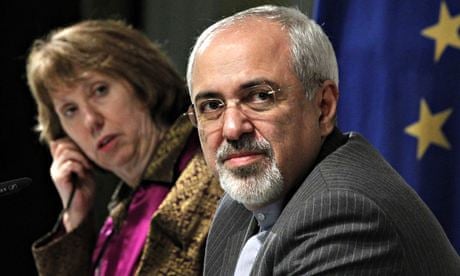"The early hours of July 21!" That was the recent prediction of a European diplomat involved in the multilateral, multi-stage talks with Iran over the country's nuclear programme. The target date for a deal is July 20. The little joke embedded in the diplomat's forecast was that past experience suggests that the talks will go right down to the wire and then a few hours beyond, as the sides jostle for last-gasp advantage, before concluding in the middle of the night.
But the more important message is that there is growing optimism that the huge, sprawling compromises required, considered fanciful not long ago, are perhaps within reach. As experts from Iran and the six-nation negotiating group (US, UK, France, Germany, China and Russia) convene in New York on Monday to chip away at the unresolved issues, they do so in an increasingly upbeat atmosphere.
What has happened so far is that terms have been defined and initial positions outlined. The really tough part begins on May 12 in Vienna when the lead negotiators come together again to start drafting, searching for common language. If they eventually succeed, it would represent arguably the greatest diplomatic achievement of the twenty-first century so far, breaking a long-running impasse that threatened for years to trigger another disastrous war in the Middle East.
Underlying the optimism is the fact that both sides have stuck so far to the Joint Plan of Action agreed in November. Iran has stopped producing medium enriched 20% uranium, which had been the most immediate proliferation concern. Of its stockpile of 209 kg at the time of the interim agreement, it says it has completed the dilution of half to 5% low enriched uranium, and will convert the remaining half to oxide (which is harder to further enrich to weapons grade) in the next three months.
Meanwhile, Tehran has confirmed that it has received all the instalments of the $4.2 billion the country was promised in sanctions relief. President Hassan Rouhani, has taken the political capital gained by this windfall and reinvested it in the negotiating process. He has accused his hardline critics of attacking the deal because they profited from sanctions. It is a powerful argument not only because it is well-founded; it also turns the populist sword against the hardliners.
In a Foreign Affairs article this week ($), foreign minister Mohammad Javad Zarif, talked about the "unexpectedly fast pace of progress in the negotiations so far" and restated the Rouhani government's commitment to forsake no only a weapons programme, but also the suspicion of a programme.
[T]he Iranian government believes that even a perception that Iran is seeking nuclear weapons is detrimental to the country's security and to its regional role, since attempts by Iran to gain strategic superiority in the Persian Gulf would inevitably provoke responses that would diminish Iran's conventional military advantage.
Another reason to be cheerful: the issue that threatened to be a deal-breaker just a few months ago now looks to be all but resolved. The Iranians have signaled they are open to a redesign of the heavy water reactor they are building in Arak, that would result in it producing less weapons-usable plutonium in its spent fuel. The redesign could involve it using enriched uranium rather than natural uranium or generating a lower power output, or a bit of both. The important thing is both sides are open to a technical compromise.
What could possible go wrong? A lot, obviously. This is a negotiation with an awful lot of moving parts. Iran currently has 19,000 centrifuges. To satisfy western requirements that the country would maintain at least a six-month breakout window (ie it would take at least six months from kicking out nuclear inspectors and starting the race to build a bomb until the completion of the first warhead) Iran would have to reduce that total to 6,000 centrifuges or less, according to the Institute for Science and International Security (ISIS). That is a lot to give up without giving the appearance of having been humiliated to an Iranian domestic audience.
Such perceptions will be key. Rouhani and Zarif must ensure that, even with constraints imposed by a deal, the Iranian programme is seen to be dynamic and moving forward. It is a symbol of national achievement and modernity. To do that, and at the same time address the West's proliferation concerns, will require a lot more heavy diplomatic lifting before that fateful night in July.
